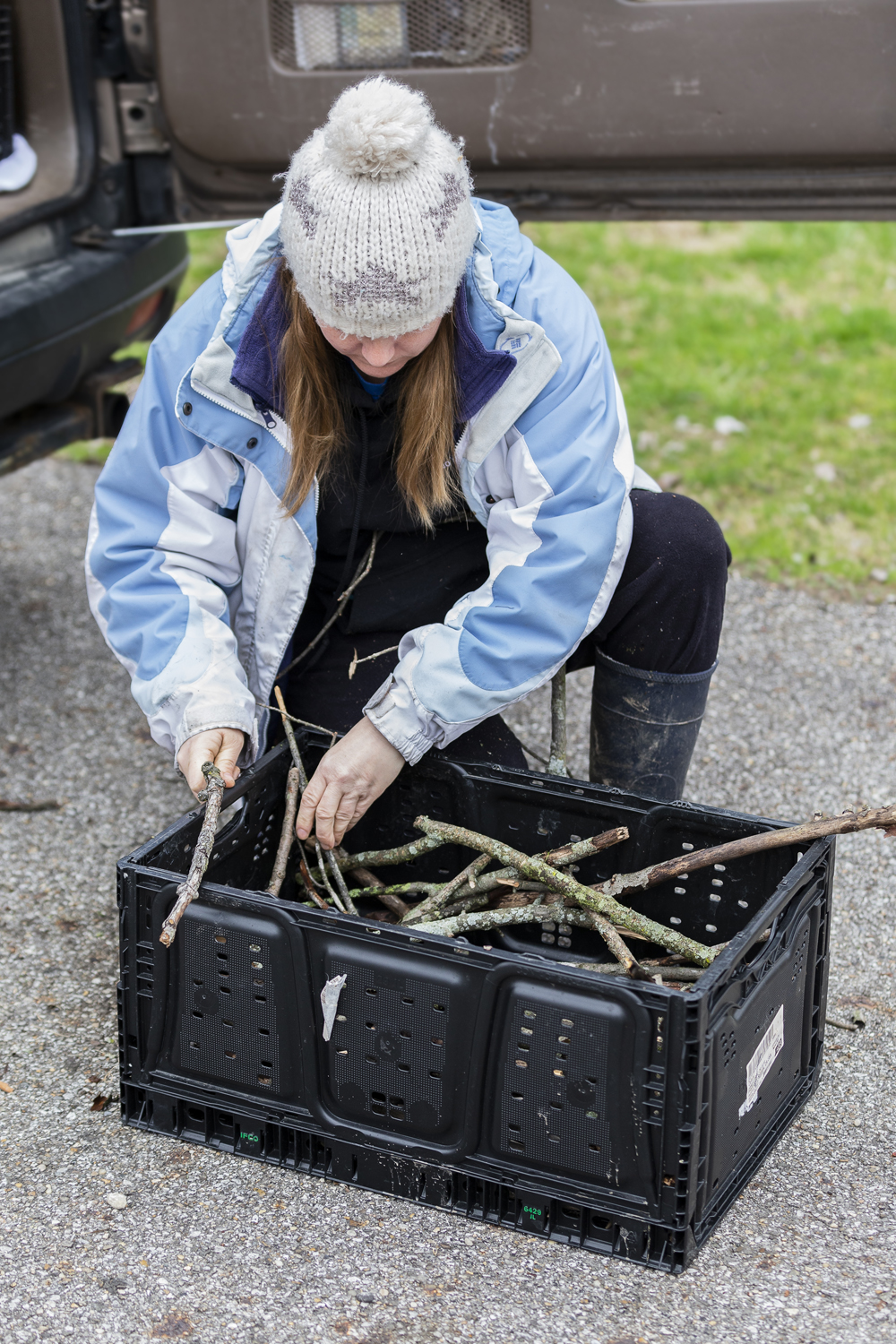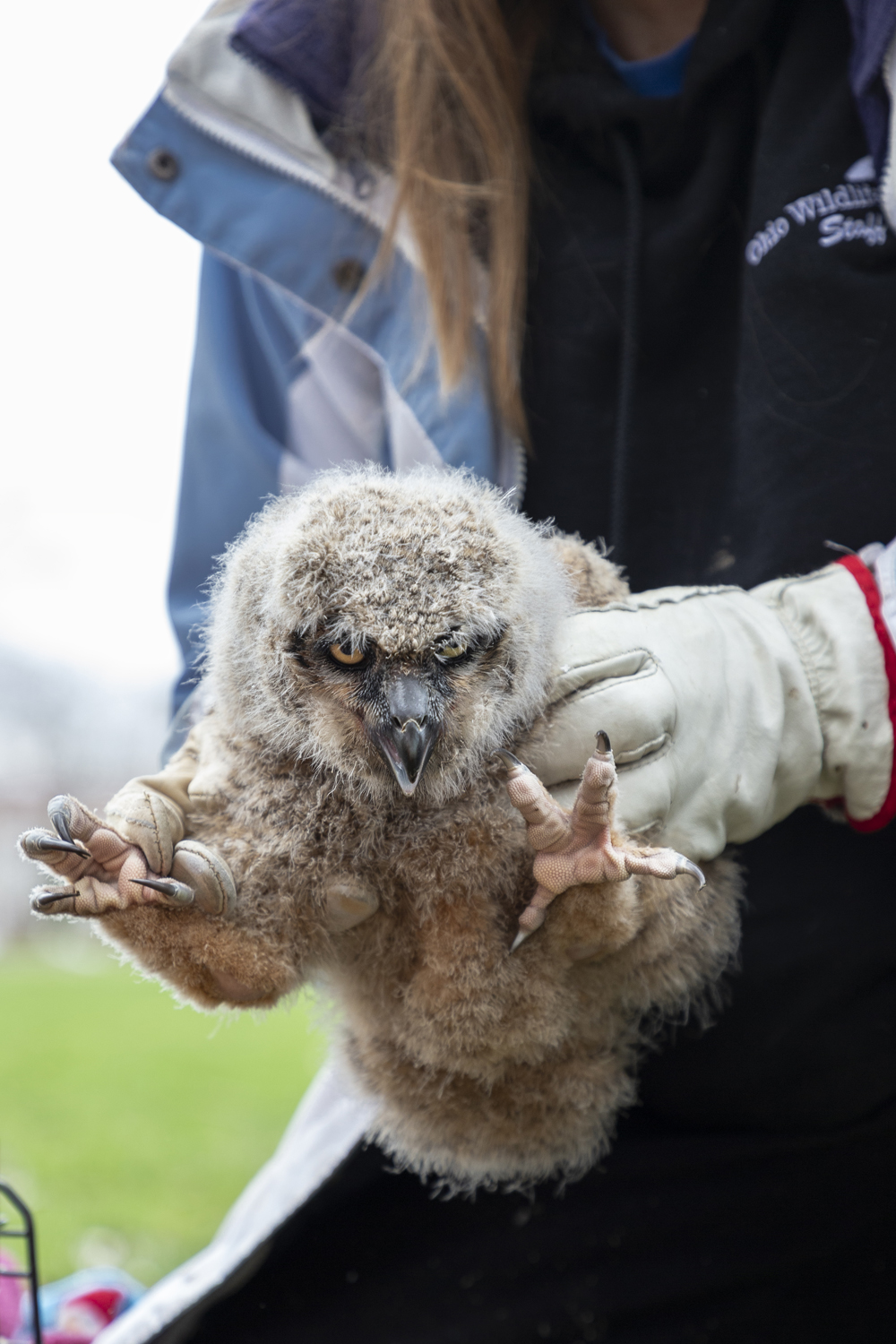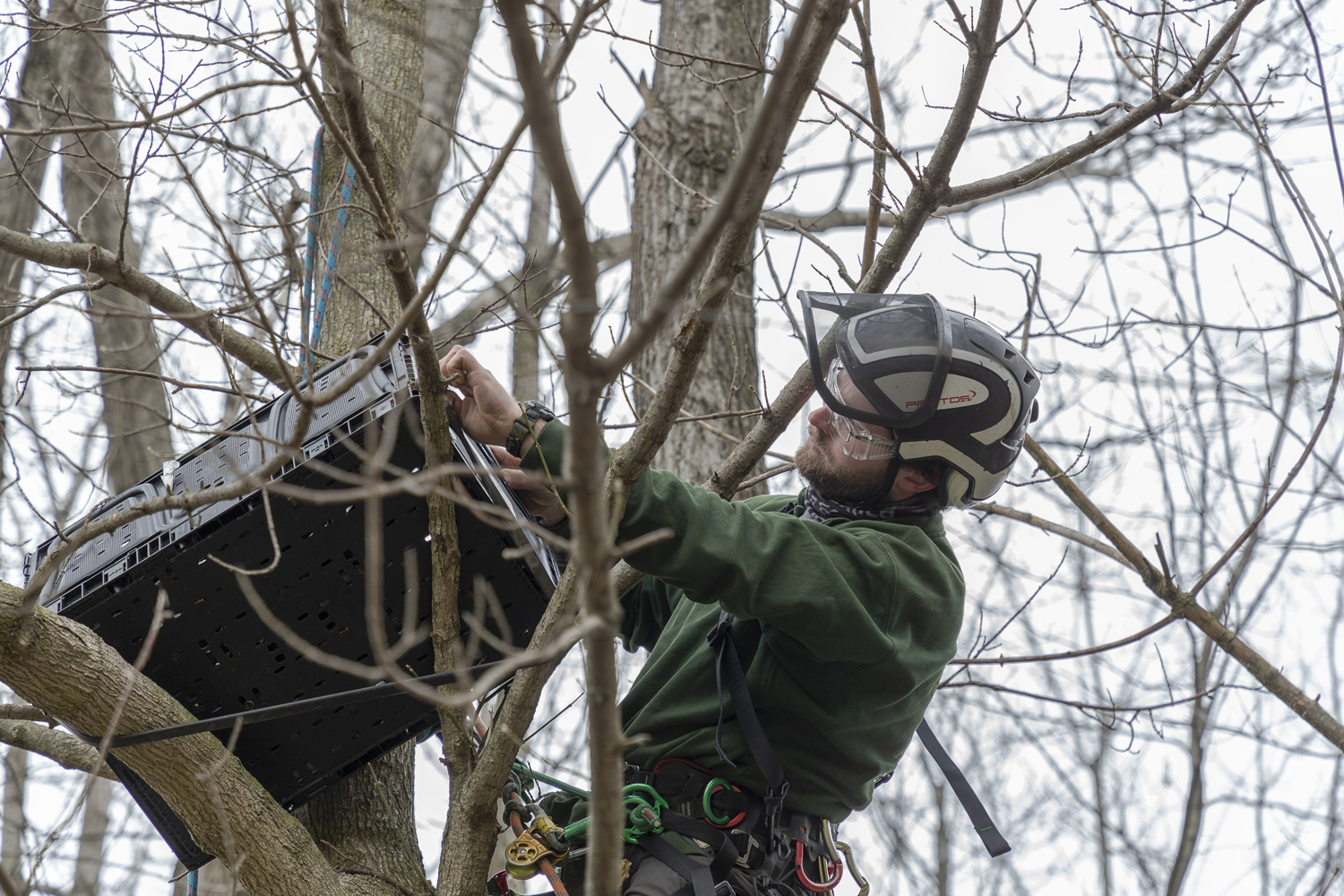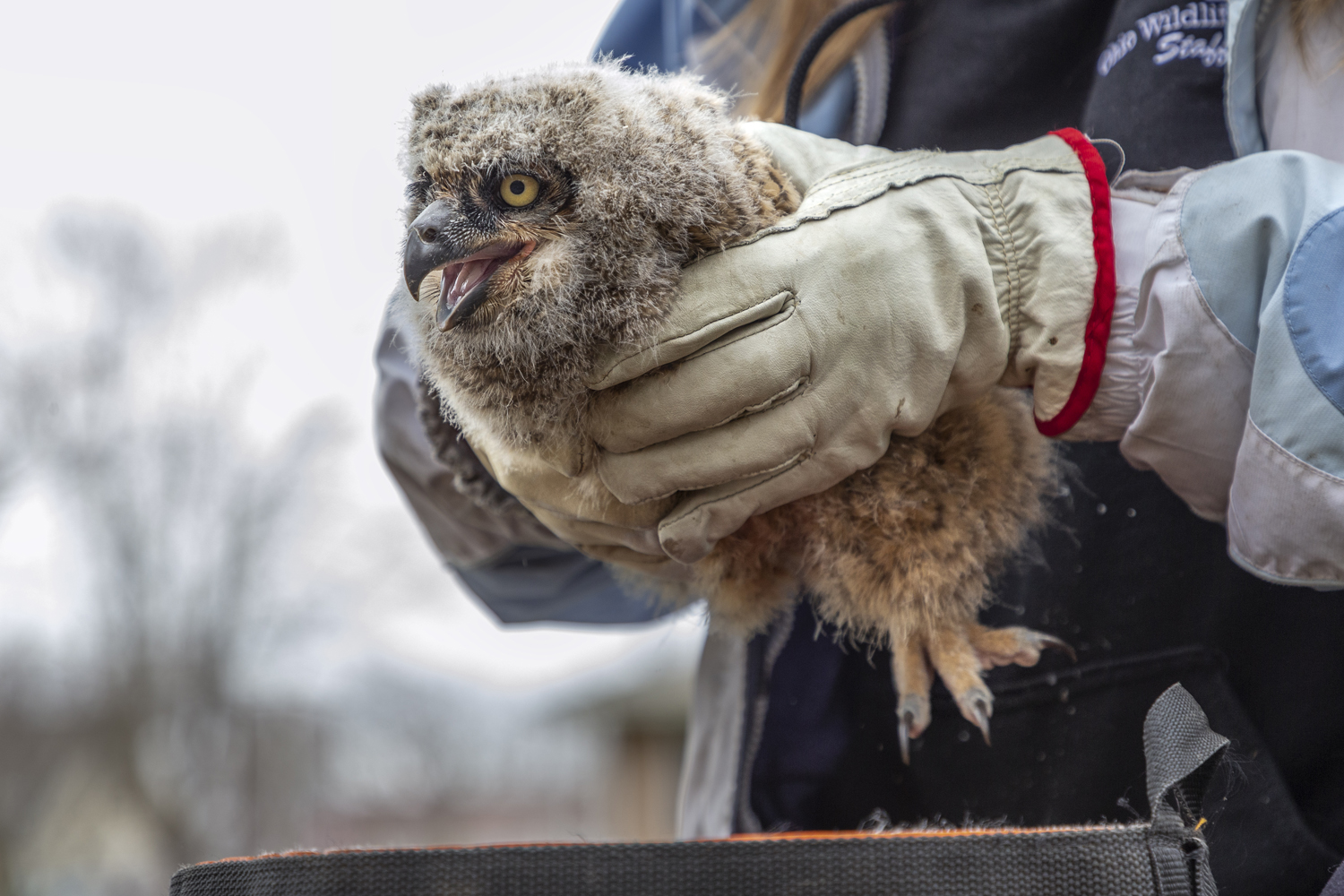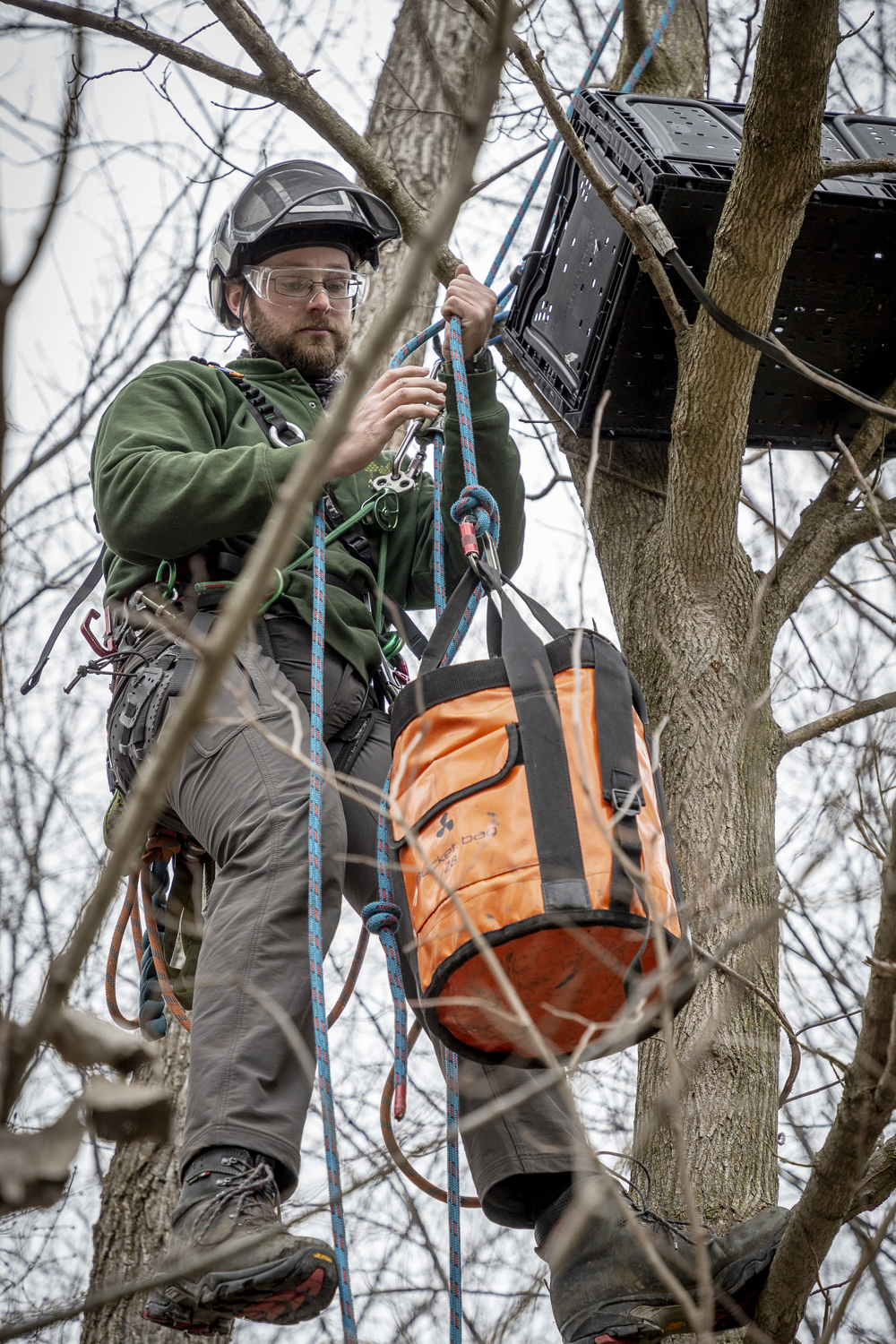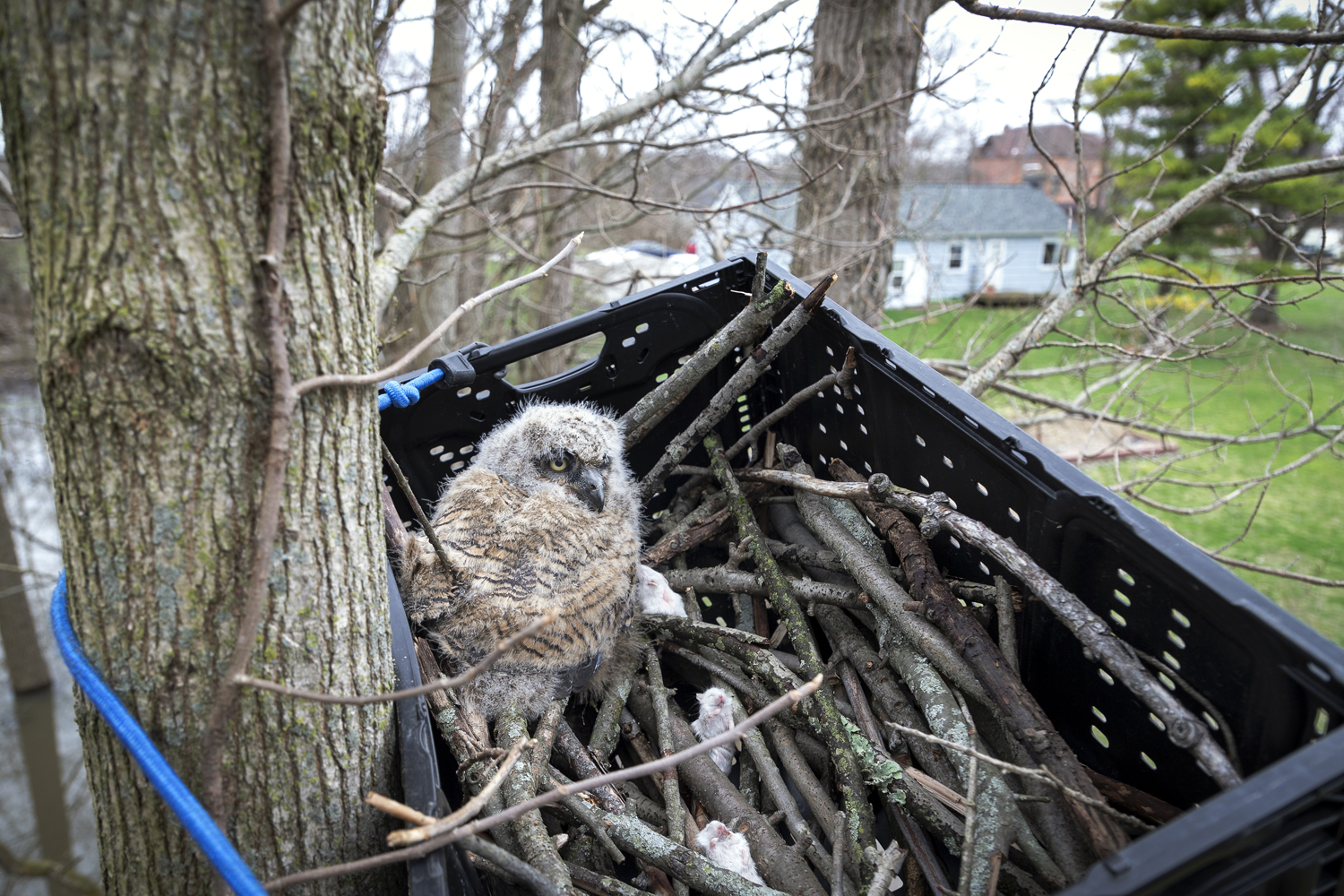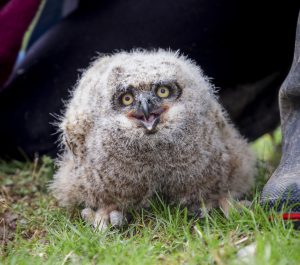 After mid-March storms displaced a great horned owl nestling in Southwest Franklin County, a team from Ohio Wildlife Center successfully reunited the young bird with its mother just a day after it was brought to the Wildlife Hospital by a Galloway family.
After mid-March storms displaced a great horned owl nestling in Southwest Franklin County, a team from Ohio Wildlife Center successfully reunited the young bird with its mother just a day after it was brought to the Wildlife Hospital by a Galloway family.
The family has observed a nesting pair of great horned owls for several years at their backyard property. After fierce storms on the night of March 19th they noticed the next morning that an owl nestling had been knocked out of the nest.
 They brought the bird to the Wildlife Hospital, where it was assessed and stabilized with fluids, warmed in an incubator and hand fed. Because the nestling was judged to be healthy, Ohio Wildlife Center staff decided to try and reunite the nestling with its mother, said Stormy Gibson, assistant executive director of the Wildlife Center.
They brought the bird to the Wildlife Hospital, where it was assessed and stabilized with fluids, warmed in an incubator and hand fed. Because the nestling was judged to be healthy, Ohio Wildlife Center staff decided to try and reunite the nestling with its mother, said Stormy Gibson, assistant executive director of the Wildlife Center.
“Raptor babies, like all animal babies, do best when they can be fed and cared for by their animal parents,” Gibson said. “When we determine that a reuniting attempt is at all possible, and the baby is healthy and stable, we map out a plan for it,” she said.
Ohio Wildlife Center hospital staff member Kristi Krumlauf took the nestling back to the property in Galloway and determined the small basket nest the mother had originally used was no longer viable to hold the baby. She brought along a small plastic crate and lined it with sticks to create a substitute for the original nest. The next challenge was mounting the crate nest in a suitable tree close to where the nestling had been found.
With the help of a technician from Ahlum & Arbor Tree Preservation company, the next steps in reuniting the nestling were completed. Stephen, a tree climbing expert and arborist from Ahlum & Arbor, scaled the tree and secured the crate in high branches. He then transferred the owl nestling from a carrying crate into a small bag and hoisted it up and into the new nest with some food.
According to Gibson, after the baby is placed in the new nest it is a waiting game to see if the mother will return to feed the bird. Krumlauf monitored the nest for the entire day, playing owl calls at sunset. When the recording started, she said, the nestling also began calling in earnest to alert the mother to its whereabouts. Soon the mother owl was heard responding to the nestling’s call, she added, and it flew into a tree branch above the new nest.
The baby’s calls became louder and faster after the adult owl appeared, Krumlauf said, and it visited the nest three more times before Krumlauf left that evening.
Krumlauf returned the next day with Stephen to check on the nest and the nestling. The mother owl was not in sight, so Stephen again climbed the tree looking for evidence the mother had resumed feeding the baby. He peered into the nest and found the nestling sitting on an entire rabbit that the mother had brought sometime during the night.
“It is not unusual for raptor parents to monitor the nest and not be seen,” Krumlauf said. “Like deer and rabbit parents, the great horned owls stay nearby but are hard to detect because they do not want to draw attention to the young,” she said. “Once the nestlings have developed feathers they also do not need a constant source of heat,” she added.
With the nestling and food supply intact, the reunification was complete and the team was assured the mother was now back in charge of the nest.
“Great horned owls are fierce predators that often take large prey, including other owls,” Gibson said. “The females are larger than the males, but pairs often call together. They have excellent night vision with heads that can swivel more than 180 degrees to look in any direction,” she said. “Both parents share feeding young owls and they are tended to and fed by their parents for up to several months,” Gibson said.
The successful reunification was truly a group effort, Gibson added. “We were able to apply our wildlife expertise to the situation after a caring homeowner was observant and detected a possible problem,” she said. “Having access to the manpower from Ahlum & Arbor was also essential in this case to get the nest back up where it belonged.”
